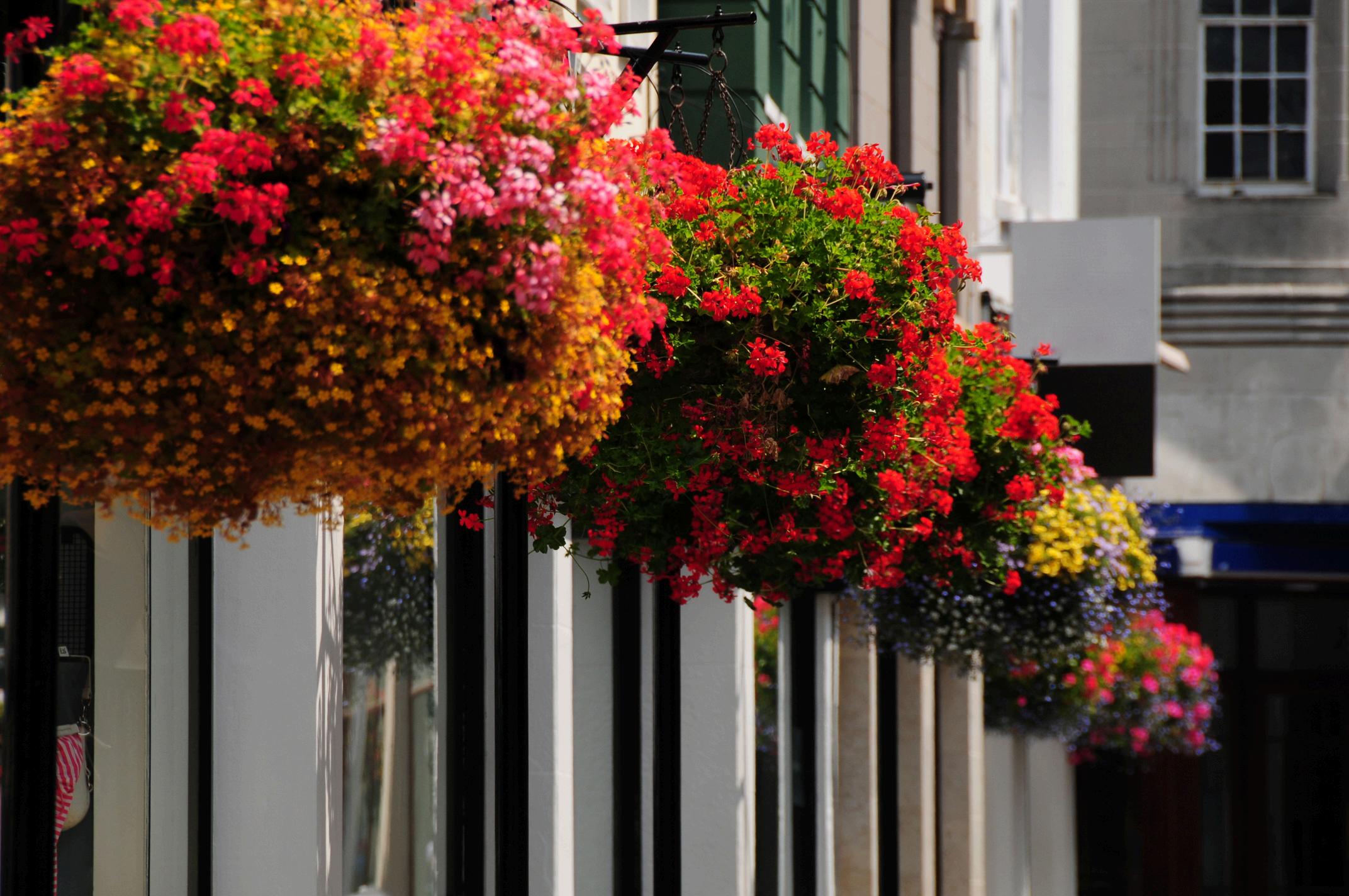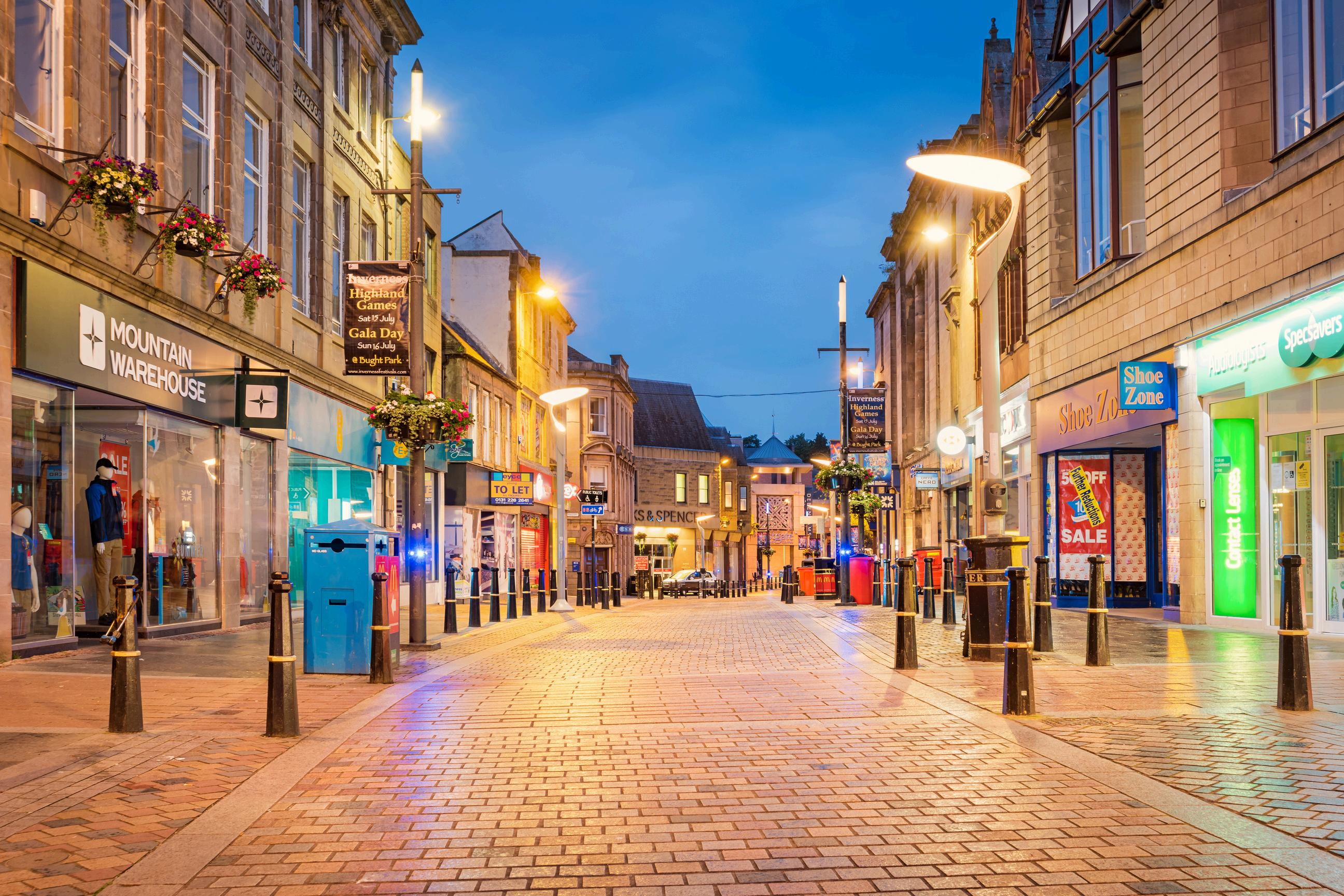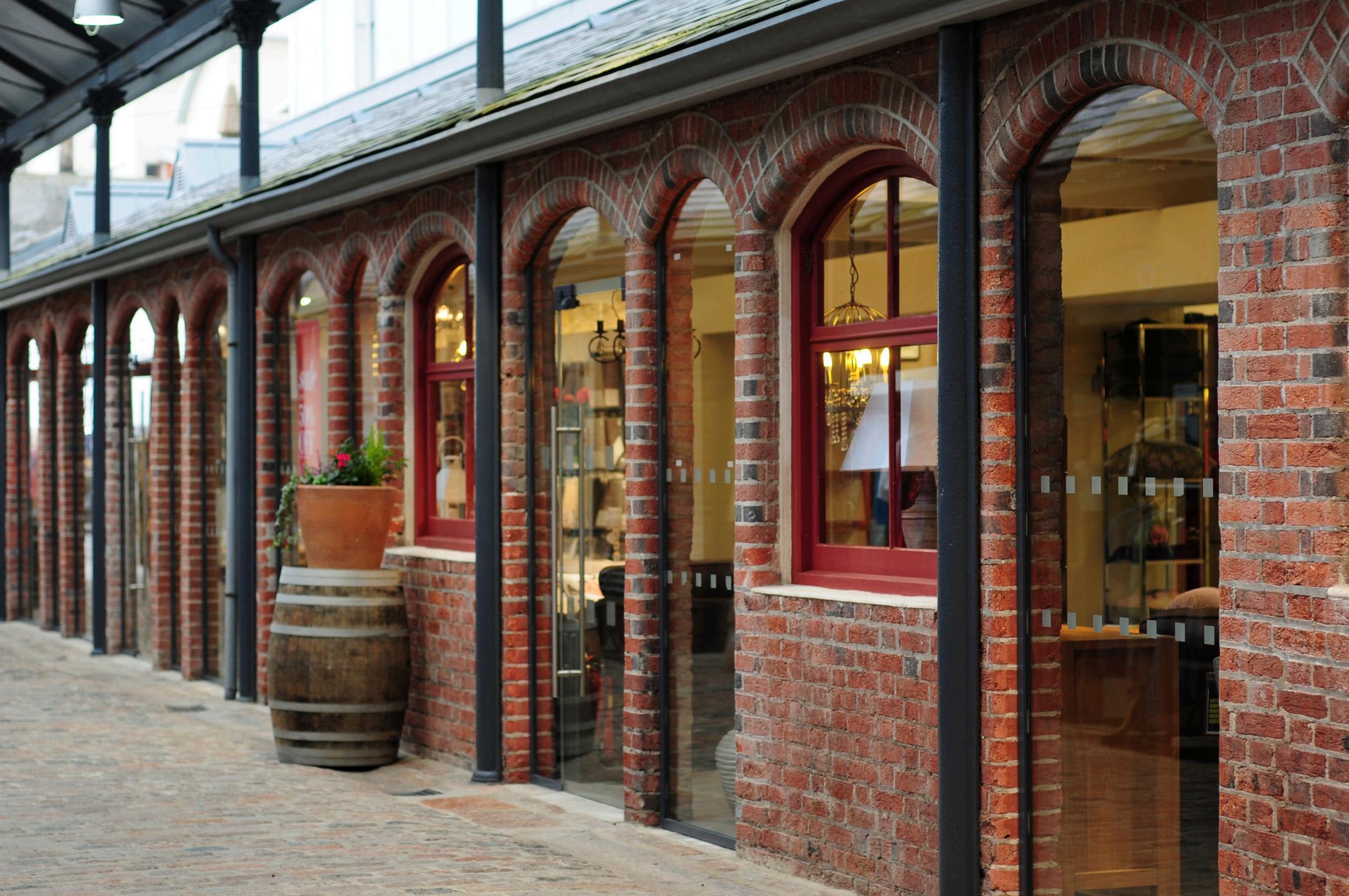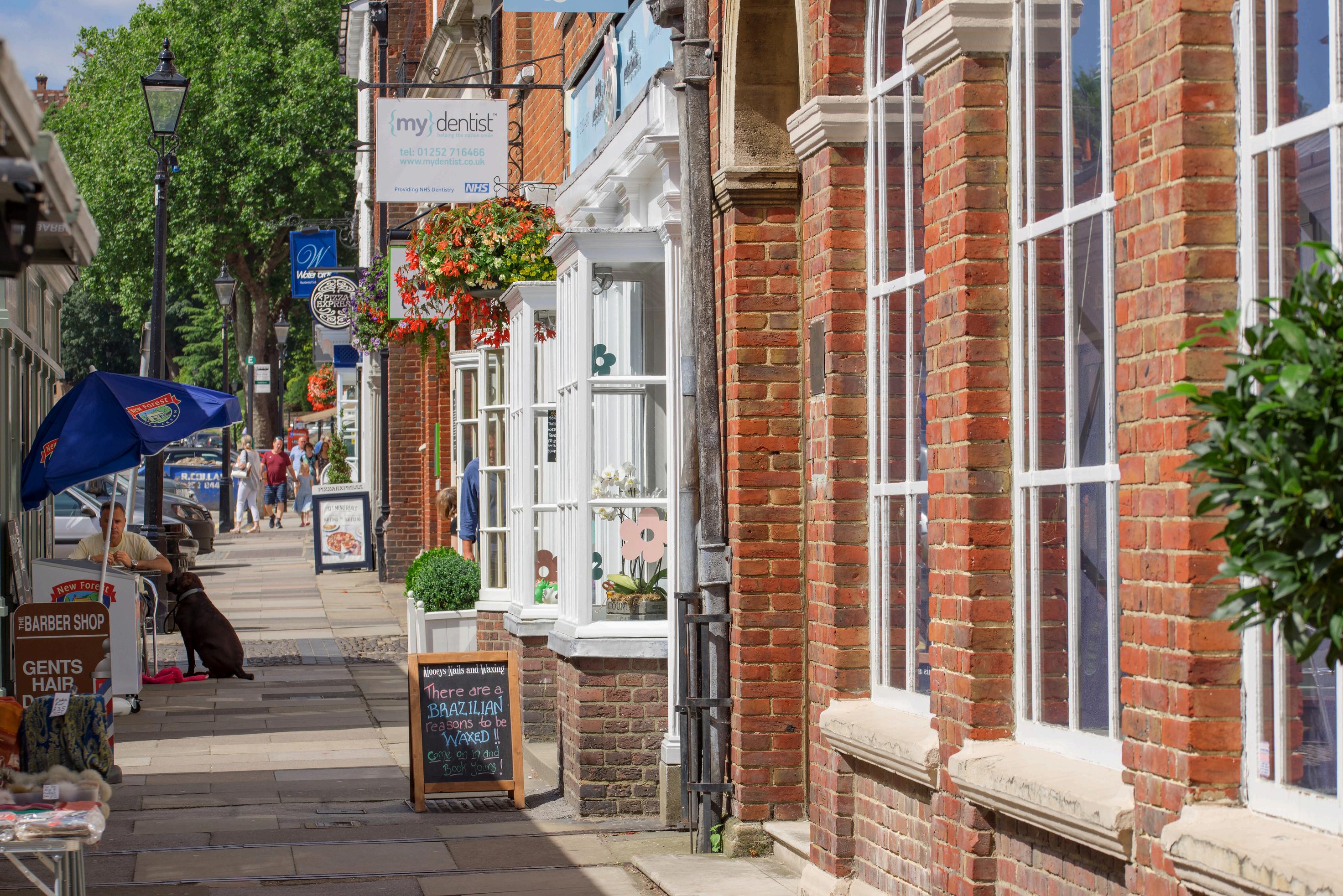HIGH STREET REPORT 2024




INTRODUCTION Foreword Andrew Jones, Wright Hassall 3 INTERVIEWS The changing High Street – a regional perspective Jon Blood, Wareing and Co 6 Envisaging the High Street of the future Chris Bowie-Hill, Hydrock 10 The UK High Street: not all doom and gloom Richard Jones, Avison Young 14 Could this be the answer to our High Street’s needs? James Brookes, Complex Development Projects (CDP) 18 CONTENTS 2


DIn recent years, the UK High Street has had its fair share of ‘bad press’ and indeed poor fortune, with the declining health of our country’s urban centres being thoroughly documented and commented on in the mainstream media
Much has been published about the disappearance of much-loved heritage retail brands and the alarming increase in vacancy rates in the wake of the online shopping revolution
whirlwind tale of a sudden and unanticipated technological revolution in conjunction with a once-in-a-century global pandemic
This narrative has redrawn the landscape of physical retail and forever changed how we conceive our town centres and how they serve their local communities.
However, change always goes hand in hand with opportunity, and all is by no means lost for the UK’s High Streets There are glimmers of hope all around us, as ever more brands, developers, landlords, local agents, entrepreneurs and specialists are creating innovative approaches, adapting their plans and driving the evolution of the High Street to bring the public flooding back to our nation’s town centres Here, we showcase some of these visionaries and their work
In our ‘Revitalising the High Street’ campaign, we talk to those working on the front line of urban regeneration to explore in detail the changes that the High Street has endured in recent years, the challenges those involved have faced, and the novel ways that they have gone about overcoming these obstacles to breathe fresh life into these unique, and uniquely important, human-made environments
e
3
For some, the secret to success has been to leverage the respective town or city’s heritage, a form of cultural capital whose value has remained high throughout challenging times: historically significant and aesthetically pleasing architecture used to serve the needs of the local community in the here and now.
For others, it’s about fundamentally rethinking the entire raison d’etre of our urban centres to offer a fresh, surprising and indeed exciting perspective on what our High Streets could become, with just a little daring and vision: vibrant social hubs where the boundaries between commercial and residential use become blurred; where people can upskill together as a community to meet the challenges of the future; and where both the housing crisis and the impact of climate change are addressed by radically repurposing the nation’s vacant retail spaces.
Throughout this campaign, we give insight into how we can save the UK’s High Streets and inspire others to aid their survival. Although their solutions differ, the industry voices we have brought together in this report identify many of the same problems
ANDREW JONES Partner, Wright Hassall
4



THE CHANGING HIGH STREET - A REGIONAL PERSPECTIVE
 JON BLOOD Director, Wareing and Co.
JON BLOOD Director, Wareing and Co.
“The High Street needs to be a balanced ecosystem.”
Jon Blood is a Director at Wareing and Co., a highly respected firm of independent property consultants and chartered surveyors based in Royal Leamington Spa. He has his finger firmly on the pulse when it comes to the health of the region’s High Streets.
Here he tells us why developing the upper floors of retail units holds the key to the future of department stores, and shares his thoughts on the advantage that historic market towns have when it comes to regenerating the High Street.
What attracted you to working in this sector?
“My grandfather was a housebuilder up in North England, and I wanted to follow in his footsteps When I came out of university in Sheffield in 2012, there weren't any jobs locally, so I moved down here to the Leamington Spa area and started my career in residential estate agency After a couple of years, it just felt like a natural progression to move into commercial real estate
“One of the things that keeps me here is the community: I feel fortunate to work in this local area, which has a lovely network of nice businesses, run by great people who are pleasant to work with and who are driving the local economy forward ”
6
What do you think is the future of department stores?
“To answer that question, I think we need to look at what has happened to department stores in recent years It is hard to overstate the impact that the global events of 2020 and 2021 had on bricks-and-mortar retail. In many ways, the pandemic effectively killed off the big department-store model, or at least gave it the coupe de grâce: retailers who, in the wake of the online shopping revolution, were just barely hanging on by their fingertips could simply no longer cling on when the lockdowns happened.
“In terms of the future of the actual buildings that used to house these businesses, I think we are seeing a slight case of history repeating itself, at least here in Leamington, where we have a large stock of historical buildings When these were first built, the business premises would be on the ground floor, and the two or three storeys above would be used for residential purposes, either by the business owner and their family or by private tenants And we are now seeing a major shift back to residential use of these buildings
“However, I am always cautious against everything being converted to residential, because I believe it’s important to have a balanced ecosystem If the majority of the town centre is given over to residential use, this obviously reduces spending times to those hours when the residents aren’t at work But if you have a balance of residential and commercial, in the form of offices and companies operating above the shops on the ground floor, then you have people coming into the town centre during the daytime as well
“One thing we will see ever more of in the coming years is that the big chain shops either move online or relocate to the retail parks In turn, we’ll see a rebalancing and rebasing of rents, especially on what used to be the prominent retail locations
In this context, the Government has got to keep incentivising retailers with rates and other kinds of benefit systems And then the spaces themselves need to be repurposed, which is what I think we will see happen to a lot of the empty department stores ”
What challenges do occupiers have in historic market towns like Leamington?
“One big challenge in many historic towns is loading and unloading: older buildings simply weren’t designed for the needs of modern retail occupiers, and vehicular access is therefore often extremely difficult. And the buildings that were originally designed for residential use are quite cellular and cannot be opened out, not least as many of them have listed status – no one is going to knock these down to create a modern retail space
“But preserving the historic character of towns is largely a good thing. Many city centres can be a bit soulless these days, as they have an identikit feel to them because all the new office blocks and apartment buildings have been designed and built by the same small handful of architects and developers
“There have been studies showing that people feel better in themselves when moving through versatile architecture compared to when moving through these rather more anonymous spaces I think this does give ‘pretty’ historic towns a bit of an advantage, especially in terms of attracting independent retailers and more affluent residents.
“We have certainly seen this in Leamington in the wake of the pandemic and the work-fromhome revolution, with people moving out of London and settling here This definitely changes the ecosystem in a way that, sadly, isn’t available to other towns that don’t have that allure of intact historical architecture.”
7
Are there opportunities out there that you think occupiers can grasp?
“The answer to this question depends so much on the area Some places face ingrained and systemic issues such as antisocial behaviour, a problem that cannot be fixed by simply opening one or two new shops These places need large-scale investment and a concerted marketing campaign to bring about a renewal of the area in general
“I think that first and foremost, there is an opportunity for towns and cities to get creative and inventive with their stock of non-listed, 20th-century buildings – the sort of slightly uninspiring concrete blocks from the Fifties, Sixties and Seventies found in pretty much every town and city centre across the country
“Yes, these can be a bit of an eyesore, but I do think there is great scope to turn them into really interesting and quite unique offerings I’m thinking specifically of Paradise in Birmingham, where a rather uninspiring site has been transformed into a truly spectacular development with a mix of retail, residential and office space. To me, it’s an object lesson in what can be achieved with a strong, clear vision and sufficient investment ”
It’s always a pleasure to talk to the regional players involved in the day-to-day business of helping our High Streets evolve. Thank you for your time, Jon!
Find out more about Wareing and Co. at wareingandcompany.co.uk.
8



ENVISAGING THE HIGH STREET OF THE FUTURE
WHY PEOPLE’S
EXPERIENCE OF
THEIR
ENVIORNMENT
IS THE KEY TO SUCCESSFUL REVITALISATION?
 CHRIS BOWIE-HILL Director of Innovation, Hydrock
CHRIS BOWIE-HILL Director of Innovation, Hydrock
When it comes to revitalising urban settings, Chris Bowie-Hill is something of a visionary –listening to him speak about the challenges and opportunities facing our moribund High Streets, you cannot help but be uplifted by his infectious enthusiasm He is a passionate advocate for making our public spaces work for humans rather than forcing people to adapt to a built environment that goes against our grain.
Chris was kind enough to take some time away from his many projects as Director of Innovation Delivery at Hydrock and share his thoughts on why people’s experience of their environment is a crucial factor in successfully revitalising our high streets and the role that sustainability has to play.
When it comes to revitalising urban spaces in an experience-focused way, what does good planning look like?
“There are several strands to this. One crucial aspect is to take a broader view of cost factors by looking at the human impact of planning decisions For example, let’s consider the economic appraisal ahead of any changes to transportation in urban areas The cost factor of extending an existing road with, say, an additional lane of traffic, a bus lane, or a cycle lane goes beyond the mere economics of the respective construction measures required and needs careful consideration
10
“For every mile that someone cycles into work, they arrive less stressed than if they had used their car to commute They arrive feeling more energised and more invested in their health and are likely to make better food choices and be more productive in the workplace They are, therefore, less likely to be a burden on the NHS. And their journey into work also leaves a minimal carbon footprint behind So for every mile cycled, there is an economic and environmental benefit
“Let us contrast this with every mile travelled by car. First, you have to create the car by digging all the materials out of the ground, transporting them around the world and processing them Then you have to fuel the car: that either involves extracting, processing and burning fossil fuels, which damages the environment and has a deleterious effect on the town or city’s inhabitants, or storing electricity in a battery made largely of lithium, which first has to be mined from the earth, never a pretty or clean process
“And now, rather than moving along unimpeded, the car is stuck in traffic, stressing out the driver more and more for every mile of the journey So they arrive at work stressed and without having exercised, are more likely to eat poorly, and also more likely to develop health problems and become a burden on the NHS It has been proven time and again that there is a cost to the economy for every mile we drive.
“So, as you can see, good planning takes a bigger-picture, long-term view of the human impact of decision-making and focuses on experiences and also health outcomes
“However, it’s also about not planning in splendid isolation from the people who are supposed to benefit from those decisions Urban planners need to listen to all the stakeholders and find out what it is that they really want from their High Street What do they want their town centre to be? It is crucial to really engage with the people on the ground and find out what it is they want, rather than imposing something on them ”
Which towns and cities do you feel really nail it on the planning policy front?
“A place that immediately springs to mind is Utrecht in the Netherlands, which has undergone a serious makeover in recent years Before, it had what was essentially a motorway running through its centre, following a planning brief created in the 1970s to make the town a super-connected place where the car was king But Utrecht didn’t thrive So the decision was taken to remove the motorway and restore the historic canal that had been filled in and tarmacked This is much more in keeping with the rest of the country, and Utrecht is now a thriving town with a green-blue infrastructure of parks and waterside spaces that has drawn people back in A great example of how to reimagine a town centre and start to listen to the needs and desires of locals
“As humans, we are innately drawn to and seek connection with other living things and nature. This is biophilia in action If we can make the centres of our towns and cities more natural, this not only makes them more attractive to us but also has all manner of benefits in terms of biodiversity and climate resilience, air quality, adaptability to climate change, air-cooling, and so on. It’s win after win after win, with no downside
“What it boils down to is the question of how you design spaces around people It’s about the experience that people have – an experience that is human-centred and enjoyable and makes people want to be in that space. And once they are there, they will generate revenue and income It’s a virtuous circle But we need to focus first and foremost on the experience: that’s where it starts for me
Net Zero and sustainability are high up on the political agenda these days – can you tell us how these inform your own thinking when it comes to urban regeneration?
“At the macro-economic level, our societies are trying to become more self-reliant, more geopolitically resilient, and this kind of thinking needs to be incorporated at the level of individual towns and cities as well: how do we operate a city from the level of zero waste and
11
zero transport miles? How do we create a thriving High Street with nothing coming in and nothing going out?
“We have been trying to find potential answers to these questions while also taking account of the general consensus that in order to drive footfall on the High Street, we need concepts centred around community and experiences One potential solution kills these two birds with one stone by repurposing the many empty anchor stores on our High Streets
“This approach adopts some retail thinking in the form of a loss-leader strategy to draw people back into our town centres: we have come up with some ways that the front areas of these empty stores – where daylight streams in and people feel comfortable and connected to the outside world – could be turned into ‘loss-leading’ community spaces to draw footfall and drive dwell time on our high streets I say ‘loss-leading’ because the reality is that, although community is highly beneficial for people, it does little to create commercial value
“However, this can then be offset by also repurposing the back areas of the empty department stores – traditionally used for goods storage, staff canteens, boiler rooms and so on – as battery stores to harness the power of renewable energy; as highpowered edge data centres, needed for autonomous vehicles, smart cities and the Internet of Things; and even as vertical farms, to provide greater food security and make us less reliant on imports from places including Spain, where slave labour is rampant
“All of these potential new uses would require skilled workers to service and maintain them, thus creating valuable jobs as well as generating revenue And so what was once an empty department store would thus be transformed into an innovative future-skills hub where people come together and collaborate on how to fix our technology, food and energy problems And what was a loss leader in fact becomes a value generator: when the front spaces become filled with activity, people, footfall and dwell time, the commercial value of the front space and the entire area is gradually restored It’s the virtuous circle in action
“This may all sound very high-concept and perhaps a little futuristic, and I’m not pretending that it’s a fully functional, fully fleshed-out solution to all the travails of our High Streets But it’s a starting point and illustrative of the kinds of innovative thinking we need to not only revitalise our town centres but also tackle the most pressing issues facing this generation and those yet to come ”
Sadly, that’s all we had time for – we could have happily carried on chatting to Chris about his fascinating ideas. With genuine innovators like him at the helm, there is real hope for the future of our High Streets and urban centres. Thank you for your time, Chris!
Find out more about Hydrock at hydrock.com.
12


THE UK HIGH STREET: NOT ALL DOOM AND GLOOM
 RICHARD JONES Director of Retail & Leisure, Avison Young
RICHARD JONES Director of Retail & Leisure, Avison Young
“Physical retail is not dead. It’s an everevolving beast. Our High Streets are going to come back stronger but with a slightly different tenant mix and proposition.”
Richard Jones, Director of Retail & Leisure at Avison Young, has been passionate about the UK High Street for 30 years – in fact, he wrote his dissertation on this very subject. We recently spoke to him about how our town centres are evolving and the challenges and opportunities for high street businesses.
You’ve been with Avison Young now for six years – what changes have you seen when it comes to the High Street?
“First and foremost, we’ve had the impact of the Covid-19 pandemic to deal with Online sales were catapulted from 19 7% pre-pandemic into significant growth accounting for up to 34% of retail sales It is pleasing to see online sales now back to somewhere closer to pre-pandemic levels at 24 9% Nonetheless, the Covid-19 pandemic had a significant impact on physical retailing but more so on town centres rather than more convenient neighbourhood and out of town locations with car parking Vacancy rates on the UK’s High Streets have spiralled from a national average of 12 1 per cent in 2019 to a current rate of 13.8 per cent. But the slight silver lining here is that the latter figure
14
represents an improvement from a peak vacancy rate of 14 5 per cent in Q3 of 2021
“We have also seen the continuation of the trend of multiple retailers moving out of our regional town centres at lease end and vacancies arising through insolvency The greatest concern is the closure of large anchor stores in our town centres and High Streets and the demise of the department store has certainly impacted our town centres’ vitality
“Reducing vacancy rates to a statistic never really does justice to the real-world impact that empty shops have on our town centres. Walk down many successful High Streets and you will see that these are the living, beating heart of any town But when there are lots of voids, it serves as a marker of poor health and vitality for the town centre So it’s crucial to find and implement strategies to re-let some of those vacant shops Of course, it’s easier said than done ”
You have been interested in the rejuvenation of the UK High Street for over 30 years and even wrote your dissertation on this subject – can you see any similarities between that time and the situation today?
“The difficulties back then were the impact of large regional shopping centres on our town centres and traditional High Streets Although many of the similarities remain consistent, the core takeaway is that retail doesn't stand still, it's constantly evolving, demanding that we adapt to change and provide what people require Yet, what’s most interesting is the differences between now and 25 to 30 years ago Back then, we had town centres full of multiple retailers, and all High Streets were pretty much a carbon copy of one another – you could go to your local High Street and be anywhere
“This is now changing, as High Streets become a bit more like they were 50 years ago before all the multiple retailers moved in; that is to say, they are becoming more locally oriented, with a healthier mix of local, regional and multiple retailers as well as alternative non-retail uses
“I’m a big champion of local businesses and believe they have the potential to be the
saviour of the High Street: they're filling gaps, they’re entrepreneurial, they take pride in their business and have great customer service, all of which helps regenerate town centres ”
What would you highlight as the main challenges for change on the High Street today?
“There are a multitude of factors which impact change on our High Streets but one of the main challenges in bringing about change is their fragmented ownership It's very difficult to curate a High Street that has a really good mix of trades and businesses when the ownership is fragmented, and nobody has overall control. This is the biggest barrier to delivering a holistic, cohesive vision of what a town centre High Street should look, feel and function like
“It’s also worth adding that every town centre High Street is completely unique That’s why I’m always dubious when someone comes along with a six-point strategy to reinvigorate the UK High Street – each town has its own culture, demographics, trading conditions and challenges, something which such one-size-fitsall approaches fail to account for And that’s a good thing Every plan should be bespoke to the specific town, so that you harness its unique strengths and actually deliver what local people want
What is being done on this front? What opportunities are out there?
“The most promising approach to closing up the gaps and filling vacant units is to offer something different that isn’t just solely retail focused Avison Young has been working with many local authorities to develop strategies to improve town centres and halt the decline We are also seeing something of a revolution in alternative non retail uses.
“Leisure is an obvious example; introducing leisure anchors to High Streets not only boosts footfall and increases dwell time, but also provides an opportunity to incorporate complementary food and beverage into our town centres
“Residential is another example, which offers an immediate catchment and brings in individuals with a real sense of pride in their town centre
15
By attracting residents into their centres, towns can extend dwell time and create a night-time economy – which many of our town centres lack However, a significant challenge in introducing residential developments to many of our regional town centres lies in the substantial conversion and construction costs associated with providing accommodation within the town centre Often, these costs outweigh the potential returns, rendering such endeavours unviable
“A positive knock-on effect of attracting residents into town centres is that they draw in infrastructure and facilities in their wake, including medical services For example, Avison Young has successfully facilitated the relocation of NHS services into the heart of town centres in some locations rather than remaining on the periphery Additionally hair, beauty and cosmetic-related services have proven to be a key driver in the uptake of tenancies in recent years
“We are also dedicated to the effort of reintroducing educational providers back into town centres Many colleges and higher education institutions have moved out of town centres and into bespoke properties on the fringe of town or outside of town Reversing this trend and encouraging these institutions to take up occupancy in the centre will not only boost footfall, but also rejuvenate towns with a younger demographic and bring life back into the heart of communities.”
Tell me about Net Zero. What do you see as the biggest challenge?
“One of the primary challenges – and one that is under-publicised – is the requirement for all commercial units to have a minimum Grade B energy performance certification by 2030
“And right now, I’m uncertain about how our High Street properties will meet this requirement within the given timeframe I’m concerned that this might result in many of the properties on our High Street becoming unlettable
“There is a mitigation mechanism in place whereby landlords can apply for an exemption on a number of grounds; the main one being if the works would exceed a simple seven-year pay back But if nothing is actually done to help landlords with this burden, this could possibly lead to even more vacant units on our High Streets, which benefits nobody. This issue has the potential to become a ticking time bomb and I worry that many landlords have stuck their heads in the sand over their future obligations ”
Any final thoughts?
“I believe that the High Street often faces a lot of negative press, and I sense that some of the doom and gloom is unwarranted Yes, there is distress in our towns and on our High Streets right now, and there are certainly challenges to face But the reality is that there has been – and continues to be – ample assistance out there and many positive initiatives underway. I believe that a promising future awaits our High Streets, presenting a significant opportunity to create something that is fit for purpose moving forward
“Physical retail is not dead It’s an ever-evolving beast. Our High Streets are going to come back stronger but with a slightly different tenant mix and proposition There’s the potential to create much better town centres than we have ever had in the past, with a real community feel to them, serving the needs of local people and creating an ecosystem for local entrepreneurs ”
And on that promising note, we leave Richard and look forward to seeing what the future holds and how Avison Young has been a part of transforming and restoring the health of the British High Street.
Find out more about Avison Young at avisonyoung.co.uk.
16



COULD THIS BE THE ANSWER TO OUR HIGH STREET’S NEEDS?
 JAMES BROOKES
Chartered Surveyor, Complex Development Projects (CDP)
JAMES BROOKES
Chartered Surveyor, Complex Development Projects (CDP)
Chartered surveyor James Brookes works for Complex Development Projects (CDP), a company with real pedigree when it comes to innovatively transforming urban spaces for the benefit of local people and wider society. He was kind enough to share with us his thoughts on what can be done to help out our High Streets and town centres, based around one simple yet highly compelling idea.
CDP’s managing director Ian Harrabin was awarded an MBE for services to heritage and regeneration in Coventry. Has working with him informed your own thinking when it comes to revitalising the High Street?
“Very much so! Whenever I contemplate the question of how we can breathe fresh life into our High Streets, I find myself doing so through an Ian-tinted lens, as it were Let me tell you what I mean by way of example, in this case the potential approaches to regenerating Stratfordupon-Avon, something I have been turning my mind to in recent times due to the steadily declining town centre
“Stratford is a place that outside observers might regard as a bustling tourist town at first glance But the fact is that a large proportion of the visiting tourists take a bus from London, travel here via the Bicester Village outlet centre to do a spot of shopping, then go on to Stratford, walk around a bit, buy a mug and go back to London that same day This does not make for a thriving, vibrant town.
18
“So what can be done to change this? There’s an awful lot of chat on LinkedIn and elsewhere on social media about the High Street and the need for vision The simplest way is to convert upper floors of retail units into residential: just revert back 50 years where almost every building in town centres was mixed use.
“By adopting this approach, towns can renovate the existing building stock and make it eco-friendlier and more efficient They don’t have to upset NIMBYs by creating lots of new housing estates on the outskirts, and they reduce their carbon footprint by not having to demolish existing buildings –it’s a win-win situation
“I analysed Stratford and worked out that I could get approximately 194 apartments, 320 bedrooms and 500 occupants from upper floors of retail spaces formerly used for stock/ storage etc. If, say, 50% of that was delivered, preferably as affordable housing, this would produce permanent footfall to support retail and leisure and allow for greater flexibility on ground floor rents to retailers to bring in a better mix I think that if Stratford were to adopt this approach, it could be a complete game-changer for the town ”
In what way? How does creating affordable accommodation help?
“There is so much reporting currently about the shortage of affordable housing; what is probably less well understood is the reduction in funding for affordable housing, the rise in build costs that make affordable accommodation basically unviable, and the amount of money housing associations are having to commit to upgrading their existing stock, which is quite often not fit for purpose.
“We are all acutely aware of the shortfall in housing that is being delivered nationally, which is consequentially pushing up the price of buying a house and increasing the difficulty of getting together the level of deposit needed. This is leading to an increased reliance on rental property, but
with a shortage of property for lease, rental costs have risen dramatically, taking up a greater percentage of the living wage and making saving for a deposit even more difficult Consequently, there will be an even greater requirement for affordable housing
“If we can deliver affordable accommodation into town centres on mass, then the likelihood is that it will be occupied by a younger generation, which means we have younger people living and working in town centres, cross-pollinating the café’s, bars, restaurants and shops, but also cutting carbon footprints of travelling from outside of town to its centre.
“If you look at Stratford’s leisure sector, the majority of the workers do not live in the town centre, a) because of the lack of available accommodation, b) because of the price of town centre accommodation and c) because where possible, they have been turned to Airbnb/ short-stay accommodation, which is more profitable ”
What obstacles stand in the way of making this compelling idea into reality in Stratford?
“When it comes to innovation and redevelopment on the High Streets and town centres of the UK, the biggest blocker is property ownership Back in the Seventies, Eighties and Nineties, retailers started to become the real force in the UK property market and began to take entire buildings rather than ground-floor-only spaces, using the upper floors for stock holding, office accommodation or, in some cases, mothballing
“They did this to secure the prime spots in the High Street And, along with this occupation, they took long-term leases and paid eyewatering rents. These became perfect purchases for pension funds, property trusts, high-net-worth individuals and private pensions in the form of SIPPs and SSASs Long-term income with increasing rental and capital values, and – largely – the whole building let to a single tenant with a very strong covenant strength = a perfect hands-off investment
“Fast forward thirty years, and the whole landscape has changed: industrial/ warehousing is now the most valuable and desired property class, and retail has been in a continual state of decline for some time
19
This is largely due to the changing trends for purchasing goods, because of the Internet and home delivery
“Shops simply don’t need to hold stock anymore; they often work on a just-in-time management strategy, so upper floors that held stock and added value to the property lease have little to no value and are largely mothballed Footfall has declined, as have actual purchases The bastions of the High Street are now mainly gone, and the only ones left are the same ones seen in almost every town centre across the country, adding little variety to an increasingly boring offering.
“The property owners who purchased HighStreet assets for their long-term investment value now have a problem, as these properties are largely unlettable as a whole in their existing state and they cannot command the same rents as before. So we have seen serious capital depreciation for some time and, due to the nature of the owners outlined above, they mainly do not have the ability to change and evolve accordingly
“Pension funds largely cannot redevelop properties, as they are merely investment vehicles and when one investment fails, they often sell up and move on to the next And property trusts are hamstrung by their very nature, as the properties they hold are often bequeathed or permanently endowed, which means that the trust cannot sell them – but equally, these trusts often don’t have the resources, manpower or risk capability to change with the times, so they end up sitting on the properties, taking what they can get from a declining retail and leisure market
“High-net-worth's or overseas investors are in a similar situation, and unless they have a very active asset manager, they too take what scraps are left from occupiers, or sell up Private pensions have their own restrictions, with a legal inability to hold any form of residential property, even if it were just the sale of a long-leasehold interest of the upper floors
“With this mix of property ownership, it means that it is very difficult indeed to achieve any form of collective vision, let alone collaborate on making it a reality at scale, which is what is needed to deliver meaningful change to town centres
“I actually wrote to the current government a number of times, firstly outlining an idea for regeneration of Stratford as a blueprint for other towns, but when this fell on deaf ears and I saw that there was a complete misunderstanding of what I was suggesting, I tried to make it easier for them to understand and implement.
“I suggested a relaxation in SIPP and SSAS legislation to allow private pensions to sell off the upper floors of retail/ leisure units for conversion to residential, but only on the proviso that these could be disposed of to housing associations and local authorities for the development of affordable accommodation. This was a very simple idea and change that could have brought about a number of transformations of town centre buildings; however, again this was misunderstood and failed to raise any interest ”
Are there any other opportunities for the High Street?
“There is a massive opportunity within the creative industries to find new homes for them within our High Streets The creatives are often overlooked, and affordability is largely out of the window, with historic rents being high and the cost of any new-build accommodation prohibitive
“Complex Development Projects is taking a novel approach in Leamington Spa to deliver creative space: in partnership with Warwick District Council, we are delivering a new-build creative mix of artists’ galleries, studios and teaching spaces in an old dilapidated public house, with the created new space being taken on a long lease by the Council, which, by using its covenant strength to inflate the investment value, allows us to reduce the rent for the Council so it can sublease to the artists of Leamington, who are desperately in need of affordable space
20
“Whenever a new building is to be built – be it a school, new university, a new commercial enterprise, or a creative hub – there is an opportunity to question whether this can be built/ accommodated in a town centre I have long held a belief that there is a significant opportunity for Stratford in this
“It seems amazing that Stratford does not have a world-famous drama academy, something akin to LAMDA/ RADA/Mountview, but based in the home of Shakespeare This would bring a resident student population to the town, create a more consistent, if not annually transient, town centre buzz, but also create opportunities for smaller spaces within town-centre buildings to be converted into student accommodation, which presents less pressure on parking and the requirement for street-facing front doors ”
Sadly, that’s all we had time for. James’ ideas are fascinating and conjure a vision of how our town centres could be transformed into thriving communities once more. Thanks for speaking to us, James!
Find out more about Complex Development Projects at complexdevelopmentprojects.co.uk.
21


CONTACT US A huge thank you to everyone who took the time to talk to us as part of our Hight Street Campaign If you would like to find out more about this report or contact our team with a question, please get in touch Andrew Jones andrew jones@wrighthassall co uk +44 1926 884617 wrighthassall.co.uk










 JON BLOOD Director, Wareing and Co.
JON BLOOD Director, Wareing and Co.



 CHRIS BOWIE-HILL Director of Innovation, Hydrock
CHRIS BOWIE-HILL Director of Innovation, Hydrock


 RICHARD JONES Director of Retail & Leisure, Avison Young
RICHARD JONES Director of Retail & Leisure, Avison Young



 JAMES BROOKES
Chartered Surveyor, Complex Development Projects (CDP)
JAMES BROOKES
Chartered Surveyor, Complex Development Projects (CDP)